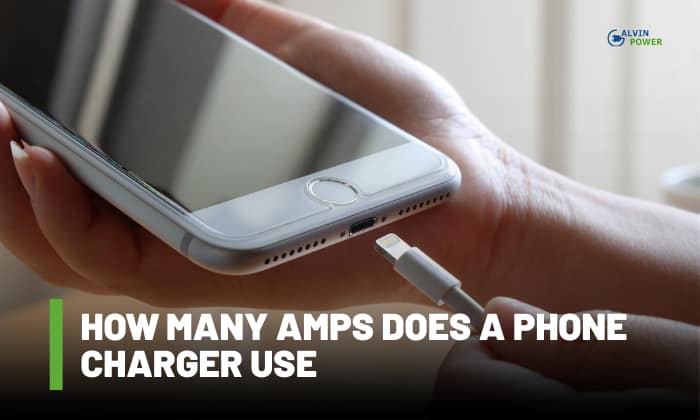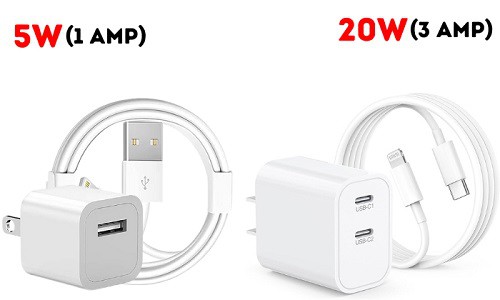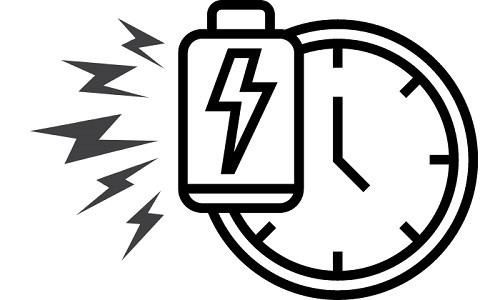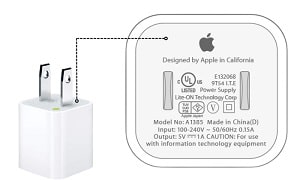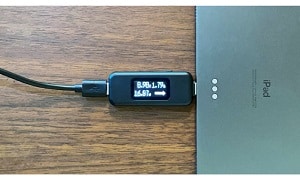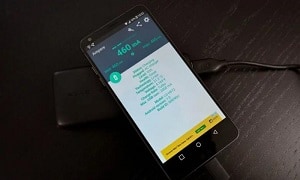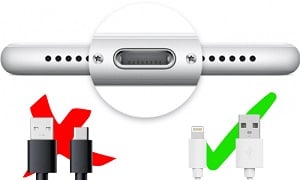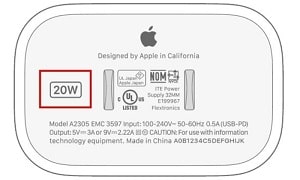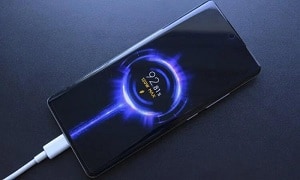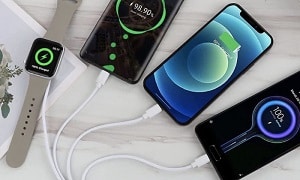Nowadays, almost everyone, including children, uses a phone daily. To keep it running, we charge it at least once a day. However, have you ever wondered how many amps does a phone charger use to power your phone?
In this article, we will look at various types of chargers with varying amperages to give you an idea of safe and effective charging. It will also give you an understanding of how much it costs to charge a phone.
Table of Contents
How Many Amps Does a Cell Phone Charger Draw?
Mobile charger output frequently differs. Typically, standard and fast phone chargers are the two most common types of devices we use. These chargers are primarily distinguished by their amperage ratings.
Let’s look at the current draw of each type of charger, as well as other important aspects.
| Charger Type | Voltage | Amp Draw (Approximate) | Wattage |
| Standard Charger | 5V | 1.0 A | 5W |
| Quick Charge 1.0 | 5V | 2.0 A | 10W |
| Quick Charge 2.0 | 5V/9V/12V | 1.67 A/2.0 A/3A | 18W |
| Quick Charge 3.0 | 3.6V-12V | 2.0 A or 3.0 A | Up to 36W |
| Quick Charge 4.0 | 3.3V-20V | 3A or 5A | Up to 100W |
| USB Power Delivery | 5V/9V/15V/20V | Up to 5.0 A | Up to 100W |
| Super Fast Charging (Samsung) |
9V/10V/15V/20V | Up to 4.0 A | Up to 45W |
| Warp Charge (OnePlus) |
5V/10V | Up to 5.0 A | Up to 30W |
| SuperVOOC (Oppo) |
10V | 6.5 A | Up to 65W |
1. Amperage Ranges and Compatibility
A standard phone charger has an average current rating of less than 1 amps. Most old electronic gadgets or small electronic devices use these types of chargers. It typically provides a consistent and dependable current that is suitable for most electronics.
On the other hand, as technology improves, a standard charger evolves into a fast charger, allowing users to power their electronic devices more quickly. It usually starts at 2 amps or higher, depending on the charger model and its compatibility with the device, especially for most newer electrical gadgets.
2. The Impact of Charger Amperage on Battery Life
The most significant effect of charger amperage is on charging speed.
Mobile phones charger with a higher amperage can often send energy to phones faster by delivering a higher current. Chargers with lower amperage, on the other hand, tend to result in more extensive charging periods due to their limited current output.
In terms of battery life, the phone charger amperage rating has no direct effect.
However, utilizing a charger with a lower amperage rating than the device’s capacity can cause the former to work harder than necessary. This could cause the unit to overheat, perhaps causing damage.
As a result, determining the proper charger amperage is crucial for optimal speed and safe charging. Therefore, you should use only a device that falls within the manufacturer’s amperage range recommendation or greater than it.
3. How Can I Find How Many Amps Does My Phone Charge Use
Determining the amp rating of your phone charger is crucial for choosing the right accessory and ensuring optimal charging performance. Here are some ways to find out how many amps your phone charger uses:
- Check the Charger Label
You can usually tell how many amps a charger is by reading the information label on the device itself. It specifies the voltage and current ratings for its input and output. In general, the power input indicates how much energy the charger requires, and the power output indicates how much power it sends to your device.
- Use a USB power Meter
A USB power meter can also be used to determine the Samsung quick charge amps, iPhone charger amps, or that of any other phone charger. Simply connect your USB phone charger to the meter that is currently connected to the electrical outlet, and it will provide you with an accurate readout of the power output.
- Using Smartphone Apps
Certain smartphones allow you to utilize apps to read the actual amp rating of the charger in milliamps. Simply run the apps and charge your phone to get the exact amp rating.
4. Tips for Choosing a Charger
Several aspects must be addressed when selecting a charger for your electronic gadgets to ensure optimal performance and safety. Here are some important considerations when choosing one.
- Charging Port
Charging ports on devices like USB Type-C, Micro USB, or Lightning may differ. To ensure a proper and secure connection, make sure the charger’s port matches the port on your device.
- Power Output
Power output is usually expressed in watts or amps. Faster charging is associated with a higher power output. Ensure that the charger has enough amps to charge iPhone or any smartphone.
- Fast Charging Feature
Look for chargers that are compatible with fast charging technology or have 9 up to 12 volt phone charger output. It will help to increase the charge rate use per hour, resulting in a shorter waiting time before you can use your phone.
- Multiple Device Charger
If you need to charge many devices at the same time, consider a charger with multiple ports. It will allow you to power many gadgets at the same time conveniently.
- Brand
It is best to choose a battery charger with a brand that is designed exclusively for your phone. However, while looking for other manufacturers as alternative chargers, only consider brands with an established track record of providing dependable and high-quality electronics.
Factors That Affect Phone Charging Speed
- The capacity of the battery often influences the charging speed. When the phone battery has a low charge level, the charging pace is usually faster than when the phone battery has a high charge level.
- Extreme battery temperatures can reduce amp hours to charge and shorten the device’s
- When in cars, other electronics or phone use could reduce the battery charge level and cause slower charging.
- A battery’s health can affect the charge as an older or degraded battery may charge more slowly than a new one.
- Lastly, using an incompatible charger with the phone may result in slower charging speeds due to differences in input and output current
Tips for Optimizing Phone Charging Speed
- Use a wall outlet, since it can give more power than a USB charger connected to your computer or other electronic devices.
- While charging, consider turning off your phone completely to reduce the number of apps operating in the background.
- Avoid using your phone while it is charging because the device can consume more power than it can receive.
- Turn on airplane mode to limit background activity and save battery power.
Frequently Asked Questions
How to charge your phone properly?
The most common mistake we make is draining the battery completely before charging. Another is using the wrong type of charger.
If you’re wondering what type of charger do Androids use or iPhones use, the answer is USB Type C for the former and USB-A or USB-C to Lightning cables for the latter.
Furthermore, many people charge their phones overnight, so it will have a full battery for the next day, but this isn’t good. You may not realize it, but doing these things can shorten the life of your phone’s battery if it overheats.
To avoid this, charge your phone when the battery reaches 25% and unplug it at 80 or 90%. This is known as partial charging, which helps lessen the likelihood of damaging your phone battery.
Can using a higher amperage charger damage my phone?
Some smartphones are intended to allow quick charging and higher amperage, while others are not. Even if your phone does not support fast charging, using a high-power charger is still safe. This is because your phone charger drawing current won’t exceed the amount it can handle.
Are lower or higher amps better?
Using a high amperage phone charger will not cause damage to your device. Meanwhile, lower amps chargers frequently result in delayed charging or may not power a device at all.
In that case, complying with your ampere charger manufacturer’s recommendation for safe and effective charging is essential.
How much electricity will a phone charger use?
The phone charger wattage usually determines the amount of electricity consumed. It may use an average of 2 kWh per month or up to 24 kWh per year if it has a rating of 120 watts. In this case, a lower wattage charger may have a lower kWh rating but take longer to power the phone.
How much does it cost to charge a phone?
The cost to charge a cell phone is determined by the power cost in your area and the charging time. For instance, living in the United States could cost you an average of $0.2 monthly or up to $4 yearly.
How long does it take for a phone to fully charge?
In general, most smartphone recharge in less than two hours. However, the charging time is primarily determined by the chargers ratings.
What is the difference between 1 amp vs 2 amp charger?
The main difference between a 1-amp charger and a 2-amp charger is the charging speed. A 2-amp charger can charge devices faster than a 1-amp unit due to its higher current output.
Difference between charger amps vs watts rating?
A phone charger’s amp rating measures the current flowing from the charger to the phone, whereas the watt rating represents the charger’s total power output.
Conclusion
In conclusion, understanding how many amps does a phone charger use is essential to picking the right charging accessory. This is an important factor to consider that helps you use a phone effectively.
It’s crucial to note that choosing a lower amp charger doesn’t always imply better device safety, and using a high-current phone charger doesn’t always guarantee benefits. You can only ensure safety and effective charging if you choose what is optimal for your device.

I am Edwin Jones, in charge of designing content for Galvinpower. I aspire to use my experiences in marketing to create reliable and necessary information to help our readers. It has been fun to work with Andrew and apply his incredible knowledge to our content.

